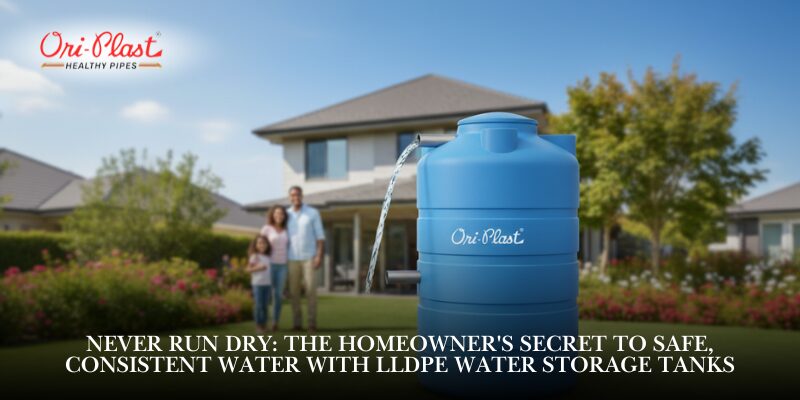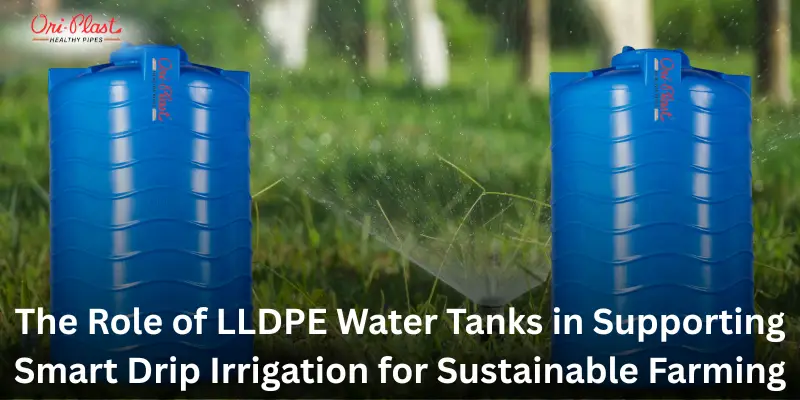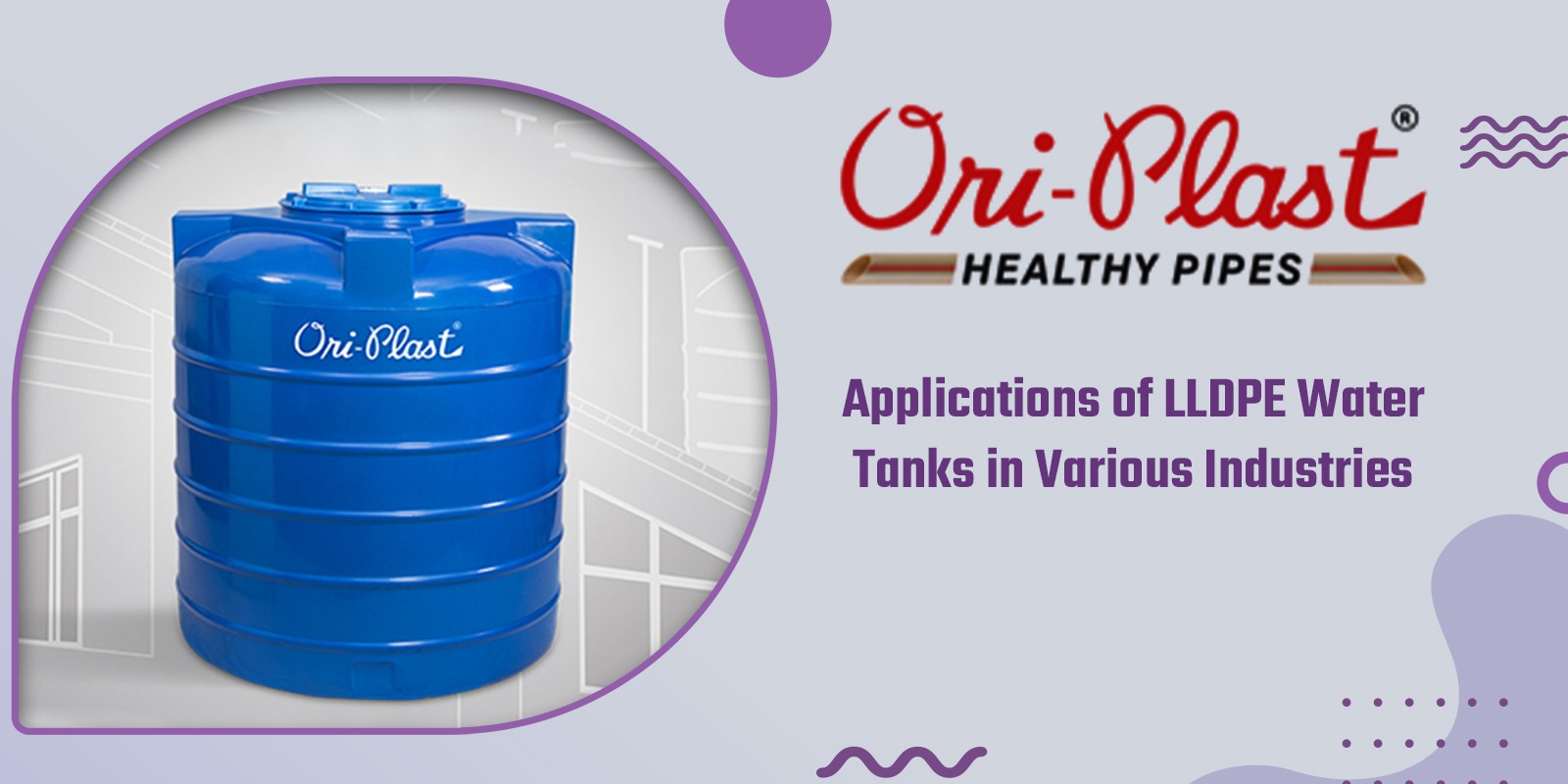Having a reliable water reservoir at home is essential, especially in cities like Kolkata, Bhubaneswar, Jaipur, Visakhapatnam & Hyderabad where water availability can vary significantly throughout the year. Choosing, installing, and maintaining the right LLDPE water storage tanks can make a significant difference in ensuring a clean, safe, and consistent water supply for your family. This comprehensive guide covers everything you need to know, making the entire process easy and stress-free.
Why Choose LLDPE Water Storage Tanks
LLDPE water storage tanks are becoming increasingly popular due to their outstanding durability, flexibility, and resilience against various weather conditions. Compared to traditional materials like metal or concrete, these tanks offer several key benefits:
- Lightweight design for easy transportation and installation, even on rooftops or difficult-to-access locations.
- Resistance to UV rays and corrosion, which prolongs the tank’s life even under harsh sunlight and climate variations.
- High impact strength with flexibility that allows the tank to withstand pressure changes without cracking or deforming.
- Environmentally friendly and non-toxic materials, ensuring safe storage of drinking water without chemical leaching.
- Whether you live in a bustling city like Raipur, where water demand is high, or a smaller town with fluctuating supply, these tanks provide reliable and long-lasting water storage solutions tailored to suit your home’s needs.
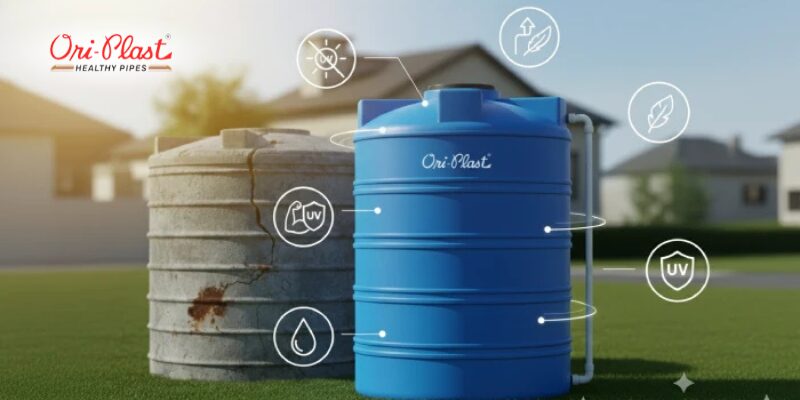 Image source : AI Generated
Image source : AI Generated Choosing the Right LLDPE Water Storage Tank for Your Home
Selecting the perfect tank calls for careful consideration of your household's water demand, available space, and budget. Here are vital points to help you decide:
- Capacity: Evaluate your family size and daily water consumption to determine the ideal tank size. Common options range from 500 litters suitable for small families, up to 5000 litters or more for larger households or agricultural needs.
- Material Quality: Always opt for food-grade, Multi layered, UV-stabilized LLDPE tanks to maintain water purity and ensure long-term durability.
- Shape and Design: Vertical tanks save space, which is ideal for urban dwellings with limited rooftop area, while horizontal tanks suit properties with wider open space.
- Warranty and Support: Choose trusted suppliers who provide solid installation support, warranty, and after-sales services ensuring peace of mind.
For example, in Assam, where seasonal rainfall drastically affects water needs, having a well-sized and quality LLDPE water storage tank is crucial to managing water availability during dry months.
 Image source : AI Generated
Image source : AI Generated Step-by-Step Installation of Your LLDPE Water Storage Tank
Proper installation is critical to maximize the tank’s lifespan and maintain water safety. Follow these steps for an efficient setup:
- Select a Stable Base: Choose a flat and level platform such as a compacted gravel bed, reinforced concrete slab, or specially designed tank stand. The base should extend slightly beyond the tank’s diameter and must be free of sharp objects to prevent damage.
- Position the Tank Carefully: Once the base is prepared, position the tank centrally to avoid uneven pressure. Smaller tanks can be moved manually, but large tanks might require mechanical equipment.
- Connect Plumbing: Securely attach inlet, outlet, and overflow pipes. It’s advisable to install a filtration system at the inlet to prevent debris contamination, especially if collecting rainwater or borewell water.
- Install Overflow and Venting: Overflow pipes help divert excess water safely away during heavy rains, preventing spillage and foundation damage. Proper venting avoids pressure build-up, ensuring tank integrity.
- Set Up a Pump (If Needed): If water pressure from gravity is insufficient, install a pump matching demand to maintain consistent water flow to taps and appliances.
- Test the System: Before regular use, fill the tank partially and inspect all joints for leaks. Run water through outlets and verify pump operation for smooth performance.
In cities like Odisha, where monsoon rains can be heavy, correct overflow setup is particularly essential to protect property and tank structure.
 Image source : AI Generated
Image source : AI Generated Maintaining Your LLDPE Water Storage Tank for Longevity
Routine maintenance ensures your water remains clean and the tank serves you effectively for many years.
Follow these recommended maintenance practices:
- Regular Cleaning: Clean the tank at least twice a year, or more often in dusty or polluted areas like Jaipur. Drain the tank, scrub walls gently with mild detergent, rinse thoroughly, and disinfect with diluted bleach or specialized disinfectants.
- Inspection: Frequently check for cracks, leaks, algae build-up, or damage around fittings and the tank surface. Early problem detection can prevent costly repairs.
- Prevent Contamination: Always keep lids secured tightly and install mesh screens on inlets to stop insects and debris from contaminating your water.
- Shade or UV-Resistant Tanks: Avoid placing tanks under direct sunlight if possible, or choose UV-stabilized models to minimize material degradation over time.
- Check Fittings and Pumps: Regularly maintain and replace worn or faulty parts to prevent leaks and ensure smooth water flow.
Residents in Punjab, known for extremely hot summers, especially value tanks with high UV resistance that remain crack-free and durable under intense heat.
Tips for Optimizing Water Quality in LLDPE Water Storage Tanks
To ensure the water remains clean and healthy, consider these tips:
- Install Pre-Filtration: Especially when collecting rainwater or using borewell water, pre-filtration reduces sediments and contaminants that enter the tank.
- Regular Flushing: Periodically flush tanks to expel settled sediments and maintain water clarity.
- Avoid Chemical Storage Nearby: Ensure no chemicals or hazardous materials are stored close to the water tank to prevent accidental contamination.
- Disinfect After Cleaning: Always disinfect tanks after cleaning to eliminate bacteria, fungi, and other pathogens.
This proactive approach helps keep your household water safe for consumption and other uses, whether you call Guwahati or Raipur home.
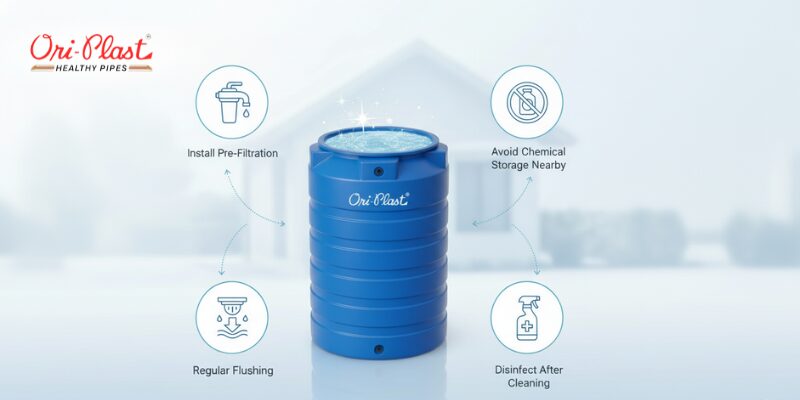 Image source : AI Generated
Image source : AI Generated Additional Considerations for Your Water Reservoir
- Water Level Indicators: Installing a water level gauge helps monitor consumption and plan refills effectively.
- Rainwater Harvesting Integration: LLDPE tanks are perfect for integrating rainwater harvesting systems, promoting sustainable water use.
- Energy Efficiency: Use energy-efficient pumps and fittings to reduce electricity consumption and operational costs.
- Tank Expansion Possibilities: Plan for future water storage needs by selecting modular tanks that can be linked or expanded.
- Environmental Impact: Choosing recyclable, eco-friendly LLDPE tanks supports sustainable living practices and reduces plastic waste.
By understanding and implementing these insights about LLDPE water storage tanks, you ensure your home’s water reservoir remains a reliable, clean water source handled with ease and confidence. From the bustling streets of Kolkata to the serene landscapes of Assam, these tanks offer a practical and durable solution tailored for diverse Indian climates and water demands. This guide combines thorough knowledge and actionable advice to help you invest wisely and maintain water quality efficiently for years.
FAQsWhat are LLDPE water storage tanks?
LLDPE water storage tanks are made from Linear Low-Density Polyethylene, a durable, flexible, and UV-resistant plastic ideal for safe water storage.Are LLDPE water storage tanks safe for drinking water?
Yes, food-grade LLDPE tanks are certified safe for potable water and do not leach harmful chemicals.How long do LLDPE water storage tanks last?
With proper installation and maintenance, these tanks can last 15 to 25 years or more.What sizes do LLDPE water storage tanks come in?
They range from small 500-liter tanks to large 5000-liter or bigger for household and agricultural needs.How do you install an LLDPE water storage tank?
Installation requires a stable, level base, secure plumbing connections, overflow venting, and leak testing before use.Do LLDPE water storage tanks require special maintenance?
Regular cleaning twice a year, inspecting for leaks, and securing lids are necessary to maintain water quality and tank longevity.Can LLDPE water storage tanks be used for rainwater harvesting?
Absolutely, they are well-suited for collecting and storing rainwater.Are these tanks eco-friendly?
Yes, LLDPE tanks are recyclable, non-toxic, and contribute to sustainable water management.What fittings should be used with these tanks?
Use lead-free, certified PVC fittings and valves compatible with tank outlets to avoid leaks.Can I connect multiple LLDPE water storage tanks together?
Yes, tanks can be linked in series or parallel to increase water storage capacity.How do I clean my LLDPE water storage tank?
Drain the tank, scrub walls with mild detergent, rinse thoroughly, and disinfect with diluted bleach.What causes low water pressure from my tank?
Leaks, cracks, or insufficient elevation can reduce water pressure; installing a booster pump can help.Is it safe to leave the tank outside in freezing temperatures?
Yes, but ensure enough space for ice expansion inside the tank to avoid damage.How do I prevent algae growth in the tank?
Keep tanks covered, in shade, and clean regularly to prevent algae formation.Can LLDPE water storage tanks be used underground?
Specialized UV and pressure-resistant tanks are available for underground installation.

